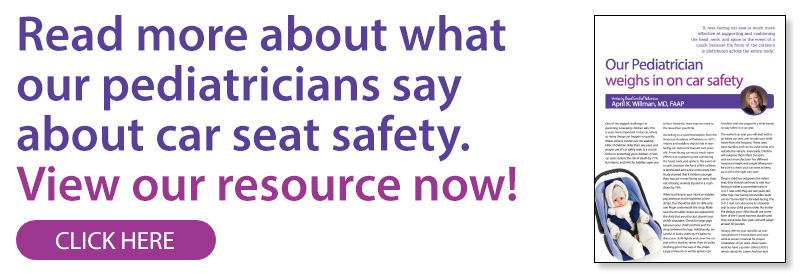One of the biggest challenges of parenting is keeping children safe, especially when it comes to car safety.
Keeping children safe in the car is very important, because so many things can happen quickly and are out of your control. Motor vehicle crashes are the leading killer of children older than one year, but there are some steps you can take to ensure the safety of your child.
Car safety seats are a crucial factor in protecting your children. In fact, car seats reduce the risk of death in car accident by 71% for infants and 54% for toddlers ages 1 to 4.
However, while car seats are an important measure you can take to protect your children, there is more to the issue than first meets the eye.
Tips to Keep Your Child Safe in the Car
According to a recommendation from the American Academy of Pediatrics in 2018 infants and toddlers should ride in rear-facing car seats until they are two years old. A rear-facing car seat is much more effective at supporting and cushioning the head, neck, and spine in the event of a crash, because the force of the collision is distributed across the entire body.
One study showed that if children younger than 2 are in rear-facing car seats, their risk of being severely injured in a crash drops by 75%.
When buckling in your infant or toddler, pay attention to the tightness of the straps. You should be able to slide only one finger underneath the strap.
Make sure the shoulder straps are adjusted to the slots that are at (or just above) your child’s shoulders.
Check for large gaps between your child’s bottom and the strap between the legs.
Additionally, be careful of bulky clothing. It’s better to dress your child lightly and cover the car seat with a blanket, rather than let bulky clothing get in the way of the straps.
Large snowsuits or winter jackets can interfere with the proper fit a child needs to stay as safe as possible in a car seat.
As Your Child Grows
The first car seat you will deal with as a parent is one designed for an infant, which you’ll need to take your newborn from the hospital. Eventually, though, children will outgrow their infant car seats.
Each manufacturer has different maximum height and weight allowances, so be sure to check your car seats to make sure your kids meet the specified measurements.
Once a child has outgrown the infant seat, they should transition to ride rear-facing in either a convertible seat or 3-in-1 seat until they are 2 years old.
After that, rear-facing convertible seats can be converted to forward-facing. The 3-in-1 seat can also serve as a booster seat as your child grows older.
No matter the design, you child should use some form of the 5-point harness buckle until they are at least 4 years old and weigh at least 40 pounds.
Car Seat Installation
Always refer to your specific car seat manufacturer’s instructions and your vehicle’s owner manual for proper installation of car seats.
Most newer vehicles have a system called LATCH, which stands for lower anchors and tethers for children. The LATCH system makes it easier to install car seats.
What To Look For When Buying a Car Seat
When shopping for a car seat, keep several things in mind.
First, the best car seat is the one that fits your child, your vehicle, and is used properly every time you drive. You don’t need to buy the most expensive car seat, but several factors can affect safety, such as the following:
- Avoid used seats if you don’t know the car seat’s history.
- Never use a car seat that has been in an accident.
- Car seats can expire, so only use one which has new plastic that has not lost its strength
- Double-check your car seats for factor recalls when purchasing them
Booster Seats
Children who have outgrown traditional car seats still need booster seats for better seat belt position until they are both 8 years old and at least 4’9” tall.
These booster seats can reduce the risk of serious injury by 45% for children between the ages of 4 and 8.
The goal of a booster seat is to keep the vehicle’s seat belt in safe, proper areas across a child’s body.
The belt should lie across the middle of the chest, not near the neck or face. The lap belt should fit low and snug on the hips and upper thighs, not across the belly.
Even once your child is big enough to use the seat belts normally, they should ride in the back seat until the age of 13.
Encourage Seat Belt Usage
As your child gets older, he or she will begin to understand seat belts, and it is your job then to encourage and enforce seat belt safety.
Always wear your own seat belt to be a good role model for your child, and emphasize that everybody needs to wear a seat belt. Children at this age will often try to unbuckle themselves, and you can use those instances to stop the car and teach your child about the importance of always staying buckled in while the car is moving.
It cannot be stressed enough that seat belts are crucial for car safety, and they are not just for children.
If you are ever uncertain about your child’s safety in the car, don’t hesitate to ask your pediatrician. Some aspects of car safety for children may seem strange or inconvenient, but you shouldn’t ever miss an opportunity to protect your child as best as you can.
We cannot protect our children from everything in this world, but there are factors we can control. As parents behind the wheel, the least we can do is make sure our children are safely strapped in for the ride.
